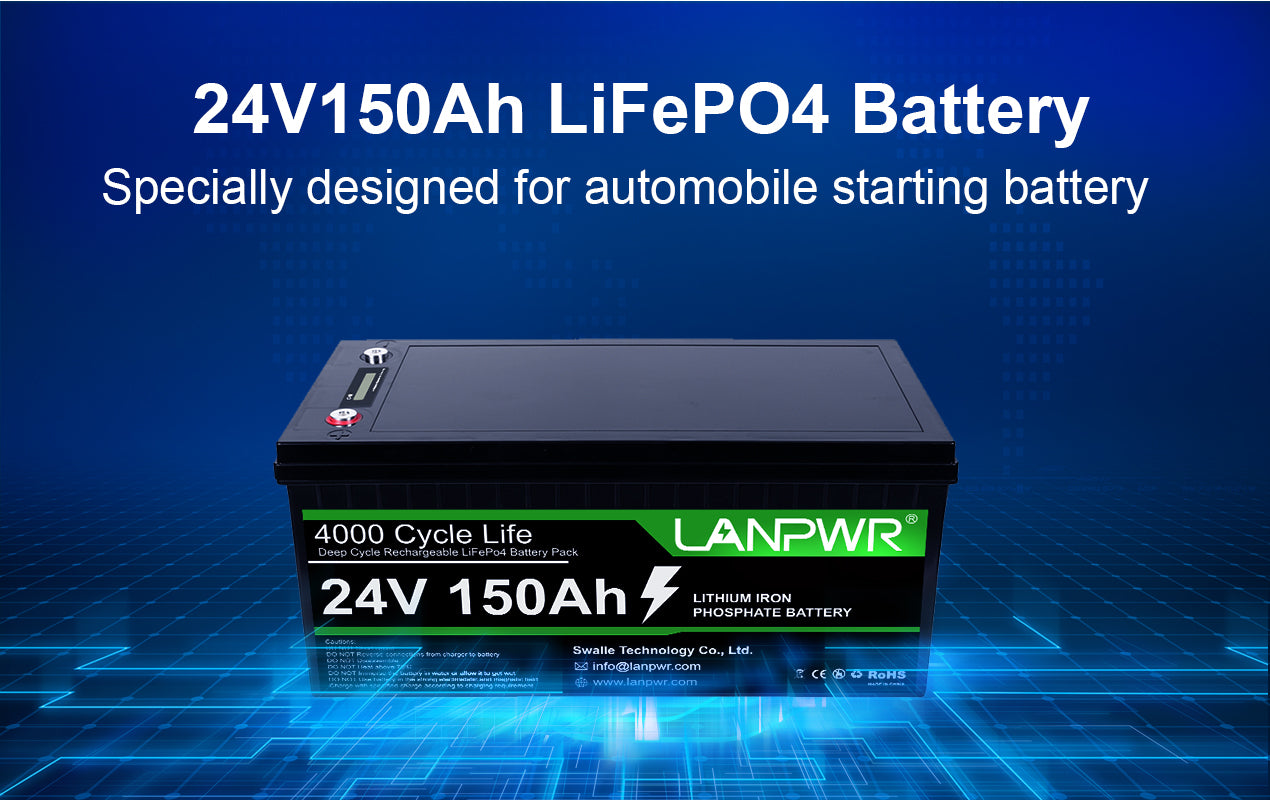The energy storage sector in Europe is for efficient and sustainable energy solutions. Within this dynamic landscape, lithium iron phosphate (LiFePO4) batteries are emerging as a pivotal technology. This introduction is a gateway into exploring the increasing adoption of LiFePO4 batteries. It sets the stage to delve into their unique attributes and the reasons behind their growing preference in the European energy market.
The role of LiFePO4 batteries is becoming increasingly significant as Europe seeks to enhance its energy storage capabilities. These batteries are not just another alternative; they represent a leap toward achieving long-term energy sustainability and efficiency. The following part will provide a detailed exploration of the technological, market, and application-driven reasons for positioning LiFePO4 batteries as a leading choice in Europe's energy strategy.
The Superiority of LiFePO4 Technology
Comparing Chemistries
LiFePO4 vs. Lithium-Ion Batteries
LiFePO4 batteries offer distinct advantages over traditional lithium-ion batteries, particularly regarding cycle life and stability. While lithium-ion batteries have very high energy density, they fall short in longevity and safety compared to LiFePO4 batteries. This fundamental difference is crucial in applications where batteries are subjected to frequent charging and discharging cycles. The extended life span of LiFePO4 batteries means they are more cost-effective over time despite their initially higher cost and lower energy density.
LiFePO4's superiority lies in its thermal and chemical stability, significantly reducing the risk of fires and explosions associated with lithium-ion batteries. This safety feature is essential in residential and commercial settings, where the risk associated with battery storage systems can be a significant concern. As such, LiFePO4 batteries are an economically wise choice and a safer option in energy storage systems.
LiFePO4 vs. Sodium Ion (Na-ion) Batteries
LiFePO4 batteries also demonstrate superior performance when compared to emerging sodium ion (Na-ion) technologies. Their higher efficiency in energy storage means they can deliver more usable energy per unit of electricity input, which is critical for the stability and efficiency of energy storage systems. This advantage is significant in sectors where energy reliability and efficiency are paramount.
Moreover, LiFePO4 batteries have a less volatile supply chain than sodium-ion batteries, which often face challenges due to fluctuations in the availability of sodium. This stability is beneficial from a production standpoint, ensuring that battery manufacturers can meet market demand without the disruptions commonly associated with sourcing raw materials. The reliable supply chain further strengthens the case for the widespread adoption of LiFePO4 technology in Europe.
Technological Advancements in LiFePO4 Batteries
Innovations in Battery Technology
Recent advancements in LiFePO4 technology have significantly enhanced their practical applications. Innovations in the formulation and processing of raw materials have led to improved energy density, challenging the previous limitations of LiFePO4 batteries. These technological strides have been instrumental in broadening the scope of applications for LiFePO4 batteries.

The ongoing research and development in LiFePO4 battery technology are improving their performance and minimizing the environmental consequences associated with their production and disposal. This focus on sustainability aligns with global trends towards greener energy solutions, making LiFePO4 batteries a compelling choice for environmentally conscious consumers and businesses.
Long-Term Reliability and Safety
One of LiFePO4 batteries' most compelling attributes is their long-term reliability. This reliability is underpinned by their robust chemical structure, which is less prone to degradation over time than other battery technologies. This durability leads to lower maintenance costs and fewer replacements, which is particularly advantageous for systems that require long-term energy solutions, such as grid storage and electric vehicles.
Safety continues to be a high concern in the development of battery technologies. LiFePO4 batteries excel in this area due to their inherent stability, significantly mitigating thermal runaway risks and chemical leakage. Numerous studies and real-world applications across Europe support this safety profile, particularly in the UK, where LiFePO4 batteries have been integrated into residential and commercial energy systems with outstanding success. Their ability to operate reliably over extended periods under diverse environmental conditions further solidifies their reputation as a safe and dependable energy storage solution.
Market Dynamics and Regulatory Influence
Growth Factors in the European Market
Renewable Energy Integration
The role of LiFePO4 batteries in integrating renewable energy sources is becoming increasingly indispensable. As Europe continues to expand its renewable energy infrastructure, the need for reliable energy storage solutions that can manage the intermittent nature of renewable sources is critical. LiFePO4 batteries, with their high cycle life and stability, provide a viable solution for storing renewable energy efficiently, enabling a smoother transition from fossil-based systems to renewable sources.
These batteries facilitate a more consistent energy supply from renewable sources, mitigating the challenges posed by the variability of wind and solar energies. This capability helps stabilize the electricity system and enhances the overall efficiency of renewable energy utilization, aligning with Europe's energy policy goals and commitments to reducing carbon emissions.
Regulatory and Policy Drivers
European energy policies are increasingly geared towards fostering the adoption of technologies that support sustainable energy practices. Regulatory frameworks and policy initiatives across Europe now explicitly recognize the role of advanced energy storage solutions, such as LiFePO4 batteries, in achieving these goals. Subsidies, incentives, and targeted funding programs are being implemented to reduce the financial barriers to adopting energy storage technologies, accelerating the market adoption of LiFePO4 batteries.
These regulatory efforts are complemented by policies to enhance energy security and sustainability. By promoting the deployment of LiFePO4 batteries, European policymakers are addressing immediate energy needs and investing in the long-term resilience and autonomy of the continent's energy systems. This strategic focus is expected to drive further growth and innovation in the LiFePO4 battery sector, making it a pivotal element of Europe's energy future.
Challenges and Opportunities
Supply Chain and Raw Materials
While the supply chain for LiFePO4 batteries is more secure than other battery types, it still faces challenges that could impact production and deployment. The increasing demand for energy storage solutions puts pressure on the supply of essential raw materials, such as lithium, iron, and phosphate. These pressures necessitate the development of robust strategies to ensure a stable and sustainable supply of these materials.
Europe's focus on diversifying its raw material sources is central to overcoming these challenges. By investing in local mining ventures and recycling technologies, Europe is working to minimize its dependency on imported materials, thus ensuring a more resilient supply chain. These efforts not only support the production of LiFePO4 batteries but also contribute to broader economic and environmental purposes, such as reducing the ecological impact of raw material extraction and enhancing economic security.

Market Share and Competitive Landscape
The competitive landscape for LiFePO4 batteries is evolving rapidly, with numerous companies making significant strides in the market. As a critical player, LANPWR has successfully carved out a robust position by highlighting the exceptional reliability, safety, and cost-effectiveness of its LiFePO4 batteries. Their strategic commitment to ongoing innovation and quality enhancements helps them sustain a strong presence in the market. Analyzing the strategies and market achievements of competitors is essential for stakeholders aiming to navigate this competitive environment effectively.
Key points to consider include:
- LANPWR's Market Positioning: Focus on reliability and safety to differentiate from competitors.
- Innovation and Quality: Continuous improvement as a core strategy.
- Competitive Analysis: Understanding competitor strategies for better market positioning.
Applications and Case Studies
Sector-Specific Applications
Residential and Commercial Energy Storage
LiFePO4 batteries are revolutionizing energy management at both residential and commercial levels. They offer a reliable energy storage solution that boosts homeowners' and businesses' energy independence and cost efficiency. These batteries are especially effective when paired with renewable energy sources like solar panels, optimizing the use of generated energy and minimizing grid dependence.
Highlights include:
- Enhanced Energy Independence: Reliable storage that supports self-sufficiency.
- Cost Efficiency: Reduction in energy costs over time.
- Integration with Renewables: Ideal for use with solar installations to maximize energy usage.
Large-Scale Energy Projects and Grid Services
LiFePO4 batteries play a pivotal role in large-scale energy projects and grid services. Their reliability and safety are critical for applications that require backup power during outages and for maintaining a balance between supply and demand on the grid. This function is vital for stabilizing the grid as Europe increases its integration of fluctuating renewable energy sources.
Critical contributions of LiFePO4 batteries include:
- Grid Stability: Providing backup power and balancing grid supply and demand.
- Safety and Reliability: are essential for critical energy infrastructure.
- Support for Renewable Energy Integration: Helping to stabilize grid performance amidst variable renewable energy production rates.
The Future of Energy Transition in Europe
The Drive Towards Energy Autonomy
Europe's push towards energy autonomy heavily relies on innovative technologies like LiFePO4 batteries. These batteries are instrumental in reducing carbon emissions and enhancing energy security, making them crucial for sustainable, reliable energy infrastructures across the continent.
Strategic importance includes:
- Reduction of Carbon Emissions: Contributing to Europe's climate goals.
- Enhanced Energy Security: Providing a Reliable energy supply.
- Long-term Durability: Ideal for sustained use in energy systems.
Predictions for Market Growth and Technological Innovation
The LiFePO4 battery market in Europe is expected to witness substantial growth, driven by ongoing technological enhancements that boost their efficiency and expand their applications. This growth indicates a promising future where these batteries become integral to European energy storage solutions.
future outlook involves:
- Market Expansion: anticipated growth driven by technological advancements.
- Innovation in Battery Technology: Continuous improvements enhance battery performance.
- Role in Energy Storage: Becoming a Cornerstone of Europe's Energy Storage Strategy.
Conclusion
Lithium iron phosphate (LiFePO4) batteries are emerging as central to this transformative journey as Europe shifts ahead to a greener and more efficient energy landscape. These batteries boast distinctive properties that render them indispensable in pursuing sustainability. LiFePO4 batteries are mostly known for their stability, safety, and long life spans, characteristics that are essential as Europe seeks to stabilize and reduce its carbon footprint. Moreover, the ongoing technological advancements in LiFePO4 battery production enhance their efficiency and capacity, ensuring they play a pivotal role in Europe's energy strategy. Researchers and engineers eagerly continue to push the limits of what these batteries can do, improving charge rates and energy density while lowering costs. This progress is vital for Europe's transition to renewable energy sources, which require reliable and efficient storage solutions to manage their intermittent nature.
As Europe meets its ambitious environmental targets, LiFePO4 batteries stand at the forefront, facilitating a smoother transition by supporting a robust, sustainable energy infrastructure. Their integration into various sectors, from automotive to grid storage, signifies a promising leap toward achieving a sustainable energy future for Europe.
We encourage stakeholders from all sectors to consider adopting LiFePO4 battery technology and engaging with industry experts to explore how these batteries can be integrated into their energy systems. This is an opportune time to invest in a technology that promises to improve energy efficiency and drive the continent towards a vast, sustainable, and independent energy future.














Leave a comment
This site is protected by hCaptcha and the hCaptcha Privacy Policy and Terms of Service apply.